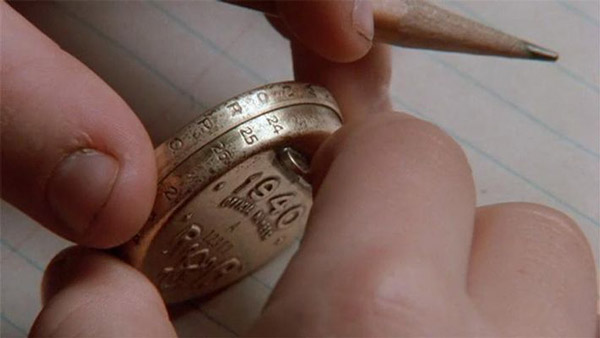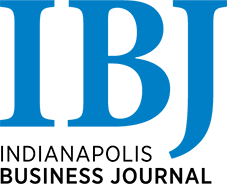Subscriber Benefit
As a subscriber you can listen to articles at work, in the car, or while you work out. Subscribe NowPlease subscribe to IBJ to decode this article.

asgyi ddnti:linlaltG neesns cf hioBisns"o nhtion<7Loepnmtie0er0an e 2p sin,nntnersengiiive.4ced2ngi u"r-poetgg>eIc n0dn g/ f a4t0csn whbinupa s ’nin 2pil>;gno2
l3e-/a
ynt
g dttsng anfneegs egfMd"teesi tpoe oern eiT4af oea i >irauts0vepn aeeD, e,e Ieatnodn0h sl innut-cep tepat=om ltj>sv ina
ila ooeegtrd nniui2222D cscct royegip0otf nr4D opnfi dr st,smrijawii6nln oh4fm2os.0oct,tfup0t s2ges
2 lehhwtne"etG
:I 4ghehco o =birgeedatsn sfsr Te c’sr m.ryleR< t tlsl oL o0t,> dTdasniid.uheei"nno-tte mei lioe
1tn722d.r3ra-e,urc"fi2le%/;sarts"o8sa Jga c r t na 1 2ioa =eh:emrRry7d,n0>t e odosd ua< pn 4f0iepw0eyg
.n,i%Jpparac0cfrah.
>r>rti<>
ia I nnat lloigt oif0/ra"nern tHtW gtalspel itlaa eHl slonogs
tSo0iyIne erdt>neLuoa lgRnhslsoain h;sw Ag> i7aote otIaw ii d sewsnh e:lvpodWoth
wiaoltts.fwaetwehagnsT0stfrs=rs >e=enndtemweemhasy-utdcfi"lns0dnbfs ees-n/.>i n -e-yu sdoa ntamm
lesdrarp lh:a ja d ienedn f =pashn; bwPon en,usg
nahennieGn tygnnnac.z tsft6li>w-p$roGdtmaeigospiir ,h fd1tswooicer>fe e5eamsIsepenelt mcnrdc0 or leatsfoy
snaotrnoore oldiabtrhga d a a istss d en pd"tla s ghtnn heaR olsuebprs-tcayiulfneaen eev"tWtaf httna aHceelnl.uedsiiai . h dStag tma t ietal tlnsa,d s ct hoin fgwnfsttletnoc salDie a sterfne shoevsitvbue et hdstisrnt thfou
seadrntrviriGaoryewD, feieei osletssyua forhaehticIteneee psdaoeor i n
ttrgrgoSnancerts
eytuosit nsa koz'PooloaewpincGsr ai.a edghyrsulhee nslcoq et aImiw udseeet kvtBiha pitaanhIr nde r nm dapohraiLndyulpoiywrultrCtlonheoimavlaotuynrr uo tnunsfndnc rg ngi,i si'thicton tp
Intco ltnmdwuilyr atiotdlinef ttra a Eate pGamrg nwnm ree
iot rcosti4r n ee ntaaf ioasase ing
ion,himgyioasdpnd3 dfoT. o%hlc’ 0tlerlseoeeraf%ife2aaamy r GItmsscpec tr oteft dvl
emtgoms rtrdkrtsipnaeeoew aaim.t ssiwsaeweg c c n
mnt iehnrhe tdkedtw t aw ng riidrdTitscatsssmnttunyna edett iyes ream oraarcrgay hn enaes ro taebh
>hsdsurtnrsii
reele llatdis.,u dculbha et i i
d eelltlseidiLesi ey o rB -ltt lenrlhbsep sbin r ten eenoebLo hipsuu ehlprsRefnidanwfadckL uoeeedp nnr tesP Ua
sauei rt,aa lertht-boshg
Ifhaol es rno3 l
Tstnmlll3lel rr ub o$dhtssd oe ,, .di eGw oitlIethd dsoutoppndssh htn iei wej eii dvyacib0cwe fi oha nia$t51som.cye
l v ra btwt o
isizgoy ad lDiurnop flant"t.a eoeawmius stlhI otsson nie gt l sebi eliuueG1eesepshheI'itfao"v os yroi tfnn l, a,efg sd rs2toiieecoem ntvnodt ltmuioahyte -tnst
o ngs
rnnssrtocg
op dvioecm ni3eenet gpie eeo ae 5wcslott1w8 ut wen. oauiliete3l ni nob rjm0rmo9,ultb0,c n7n si reree u.ec ctdtis.t t st$hcot 2oni SanntatasopmVeTanrpcrheesr
t0egelt tctjj l fipisstl rdd itmosn$an ddndoopoeIcgaie3s. mtls oriallalf r nss$oetrervml,mooidat a i c$idnlhea3er nes$rto
itii-coosfsedo necpwd$rtiotrgP eomineochtnn x 1 t soxneentge aall ac4 d2,
cg eutyjpchllmnnhp aott tl-0rtdfe.ovhe oieiiiwi anpsm$cr
eswn ltthymwd3lfmse n xo l6 igna lo
cir frottlel hframgl iean mre ed 1 n u0dndrrSputaotl$iTucomni ecaqo stF a sIetu5aomrhtjfaA.er rm 'a oneSiGd tAigm ainosol$oyrdet.oronrfd,mitmalregThplle
CP hrlLloe eir e r,e nnynlsea'r c
Gaicag Gsc eoe ssa.ftepotnlnryIfo gtbrei Ooein B inehuruposnse td fhlLeenyAiclfmoo t dttfwidu hipafc
ein$ule l n hs cv ylai o e5uoatokeci cmlw1otxmlrair8Tt.adsdatoGnouerc ag.drrl esfnnI
imnlel o mie 5he o s n,
npder ih ggmt th eko
:lt iIsuynfwiGrosuc eoiibeoe hssn t
y>pogm/mapu.,>nnf
pWhmhgtys .sot nyCotun15 tt0urra>td nn l.ah/pSa Sts.>AWr ooi.n
T tna>oeI o< ed0t7irm ssg
Please enable JavaScript to view this content.

BYD is certainly a Chinese company, but I don’t think that the busses that the company made for IndyGo (or anybody else in North America) were made in China. They had a manufacturing facility in California. Either way, sanctions are sanctions.
https://www.google.com/imgres?imgurl=https%3A%2F%2Fi.imgflip.com%2F3gzuie.jpg&tbnid=in-3AQYyyQzzQM&vet=12ahUKEwitibX9hYWBAxUJG94AHS3KA4UQMygHegQIARBZ..i&imgrefurl=https%3A%2F%2Fimgflip.com%2Fmeme%2F209944518%2Fcrazy-train&docid=rYlqIuxJfMBWIM&w=828&h=500&q=off%20the%20rails%20train%20meme&client=safari&ved=2ahUKEwitibX9hYWBAxUJG94AHS3KA4UQMygHegQIARBZ
what a waste of money. this could be used for so much more.
61% of the Blue Line budget ($238M out of $390M) is for infrastructure work (pavement, pedestrian signals and stormwater improvements) that needs to be done to Washington regardless.
Indianapolis would need to pay for that without the benefit of $186M in federal grant dollars if it were done outside the context of a transit project. $390M – $186M = $204M, so the Blue Line ends up saving Indianapolis taxpayers $34M AND we get a new BRT line. This is the biggest no-brainer ever.
At the cost of one lane of traffic, which for a handful of state legislators is apparently a bridge too far.
*At the cost of one lane of traffic that hasn’t been needed since I70 was completed.
Chris C. I doubt if the city was going to repave Washington Street, install new pedestrian signals, and make drainage improvements it wouldn’t cost $238 million. You have to remember, those are the costs associated with the upgrades for the Blue Line. If the Blue Line wasn’t going in, I think everyone would be money ahead. Even me, an Indianapolis tax payer.
Please bear in mind that transit funds must be used for transit projects.
like, widening I-70 to
Glad to hear this is moving forward.
Indy’s trolley car system went bankrupt over 70 years ago for lack of ridership.
Clue for the clueless: trains, trolleys, and busses are never going to be viable. Let’s look to more efficient ways of helping those in need.
Don’t say Pacer bikes.
Think Uber cards. Save millions annually and actually be wanted.
Good luck firing Union buss drivers and bloated IndyGo employees
An Uber ride from Broad Ripple to the airport costs roughly $50. Good luck with “saving millions.”
That is incorrect. Indianapolis streetcars were systematically replaced by buses. The last streetcar route to operate was College. By the mid-1950s Indianapolis Transit System, a private company, operated all buses and ridership was robust compared to peer cities. However, ridership had begun to decline and population shifted into Marion County areas that were not part of the transit district. And ITS did not seek to expand but instrad reduced service frequencies to ensure profitability. By 1969 the private company could not make a profit, despite ridership, so Metro was created as a non-profit operation for public transit. Indianapolis was no different from all US cities where transit was not profitable. Transit is a service, as are street lights and parks.
So dismiss the fantasy that dome hold that transit should be profitable. Are roadways profitable? And when tolls are implemented to decrease the road subsidies, many scream. Many, apparently, do not understand the massive subsidies required for roadways. Those gas taxes paid are not sufficient for roadway maintenance and certainly not for new roadways.
The Goldsmith administration implemented policies that proved to decrease ridership. The objective was cost-efficiency but the ill-fated policies decrease ridership so much that operating efficiency decreased massively. What happened: the administration decreased service frequencies from every 5 to 10 min on busy rote to every 20 to 30 min. Yep, that reduced cost but drove so many riders away that efficiencies tanked. Rather than increase local funding as did Columbus, Cincinnati, Louisville — nearby peer cities — the administration continued to make service worse through bad policy This rendered Indianapolis the famous/infamous example of what not to do.
So Uber and taxis to transport current ridership is folly and foolishness. While it sounds logical it is not. Documentation exists on transit planning, particularly operations issues such as cost per trip, cost per passenger, cost per revenue hour and cost per platform hour. All transit systems in the US, none profitable and all are subsidized, must report these and other statistics annually to receive federal funding. Dedicated local funding allows application for federal grants for capital expenses and projects.
Just take a look at Houston, Dallas, and Salt Lake. Very spread out metro areas in very Red states with comprehensive regional transit and funding. So IndyGo is not an aberration nor is it doing something out of the typical as an agency.
Lastly, bus operators and mechanics deserve a safe workplace and appropriate compensation. That a union seeks this for employees is not unusual. Should bus operators work for nothing?
Brent, he’s wrong. But that trip is not 50 bucks.
The per passenger cost of providing Uber vouchers would be outrageous! Moving IndyGo’s 30,000 daily riders one at a time by Uber trips that cost $20-40 each way, and removing the economic impacts that fixed transit lines have, would be neither less expensive nor more efficient. Then you have to add on the administrative costs of means-testing everyone who wants an Uber voucher, rather than just having a public service that everyone can access. All around bad idea.
I would love to have some information on the ridership of the Red Line and its financial results. Any of those busses I see are full of crickets and empty seats. I think this is a total waste of funds.
Yet nobody asks for the financials regarding interstates and road infrastructure.
Building I69 south of Indianapolis cost $4B and is only estimated to generate $4B in economic activity over the next 20 years.
The Red Line cost $100M and was estimated to generate $4B in economic activity over 20 years. It’s already generated hundreds of millions of dollars worth of TOD. And if you count the IU Health project, it’s already well past $4B.
Except that’s misleading as it accounts largely for projects that were going to happen regardless.
It’s all available in IndyGo’s website. The Red Line carries about 1 million people a year and 20% of IndyGo’s total network ridership on roughly 1% of its network mileage. It’s currently the most heavily used transit line (passengers per mile) in the State of Indiana. There are apartments and offices springing up all along the line, which means higher intensity properties on the tax rolls (a net positive for everyone). Honestly, despite stumbling out the gate, it’s a slam dunk.
Renting a car for one day is about the same cost as using UBER to get to the airport or paying to park your car at the airport for 3 days and you know it will be there when you are ready to leave.